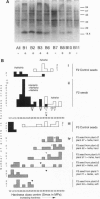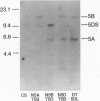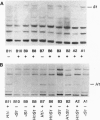Abstract
An important determinant of wheat grain quality is the hardness of the grain. The trait is controlled by a major locus, Ha, on the short arm of chromosome 5D. Purified starch granules from soft-grained wheats have associated with them 15-kDa polypeptides called grain softness proteins (GSPs) or "friabilins." Genes that encode one family of closely related GSP polypeptides - GSP-1 genes - were mapped using chromosome substitution lines to the group 5 chromosomes. An F2 population segregating for hard and soft alleles at the Ha locus on a near-isogenic background was used in a single-seed study of the inheritance of grain softness and of GSP-1 alleles. Grain softness versus grain hardness was inherited in a 3:1 ratio. The presence versus absence of GSPs in single seed starch preparations was coinherited with grain softness versus hardness. This showed that grain softness is primarily determined by seed, and not by maternal, genotype. In addition, no recombination was detected in 44 F2 plants between GSP-1 restriction fragment length polymorphisms and Ha alleles. Differences between hard and soft wheat grains in membrane structure and lipid extractability have been described and, of the three characterized proteins that are part of the mixture of 15-kDa polypeptides called GSPs, at least two, and probably all three, are proteins that bind polar lipids. The data are interpreted to suggest that the Ha locus may encode one or more members of a large family of lipid-binding proteins.
Full text
PDF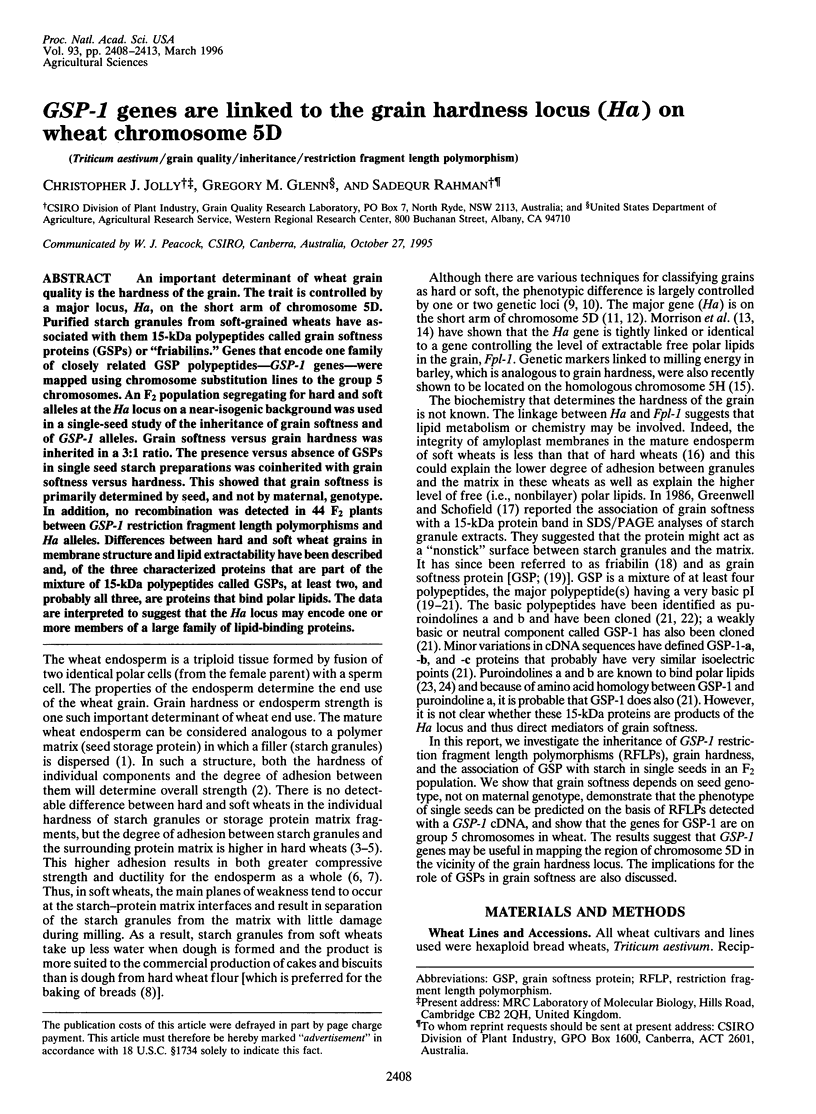
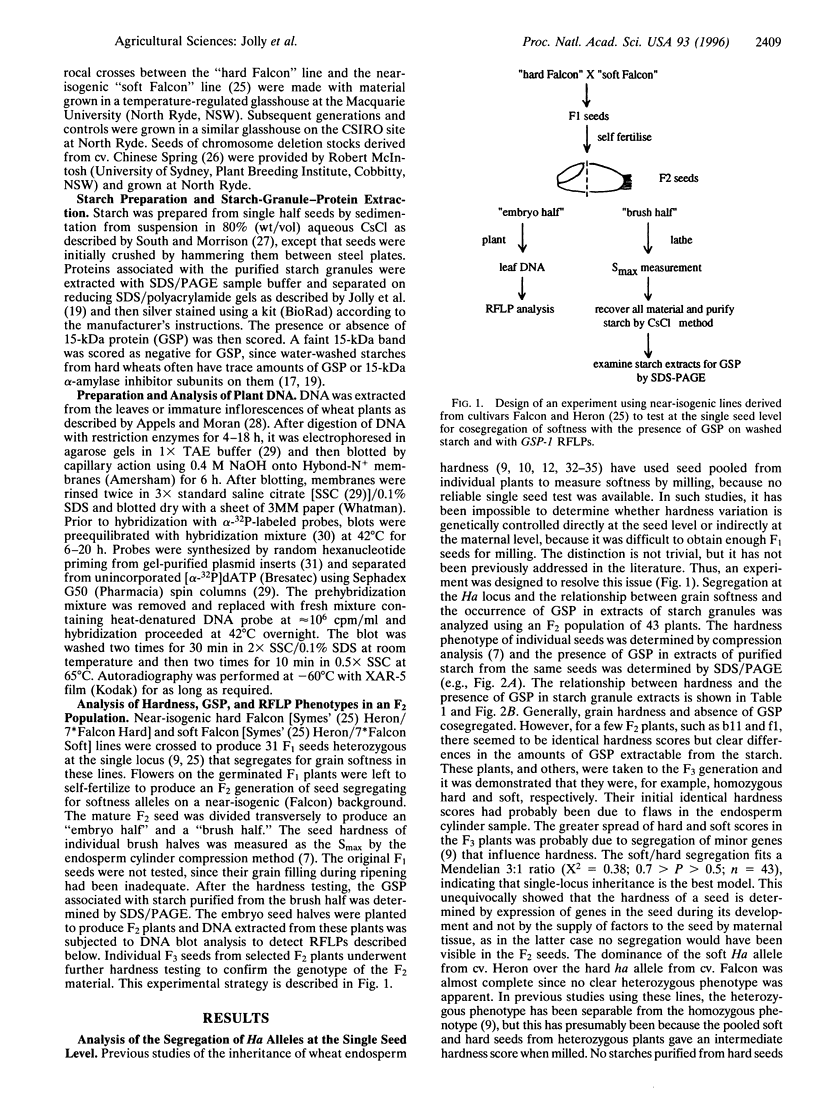
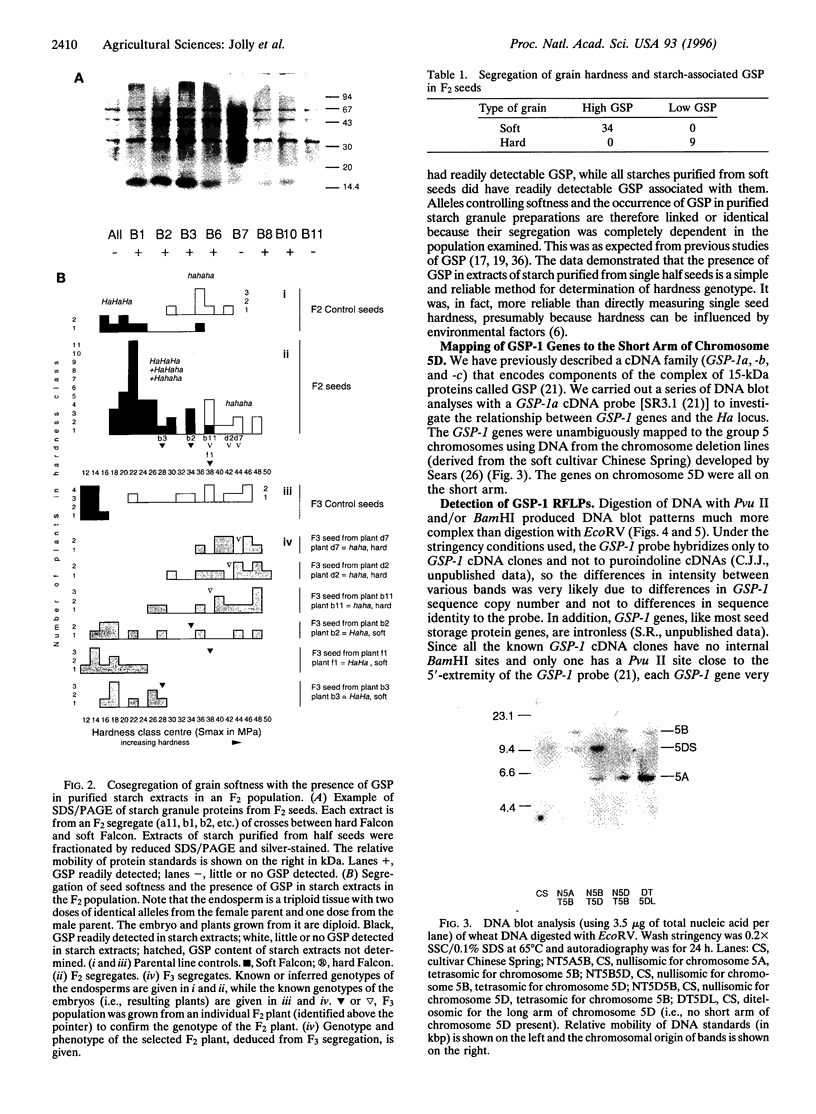
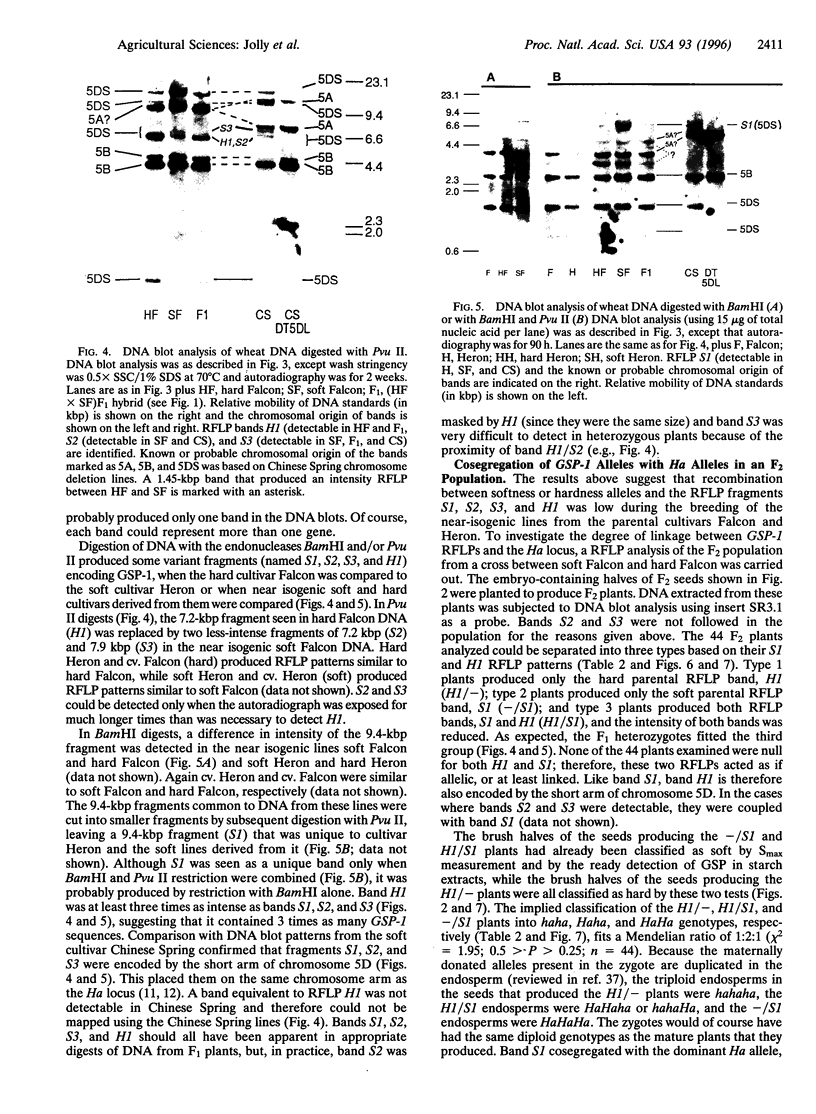
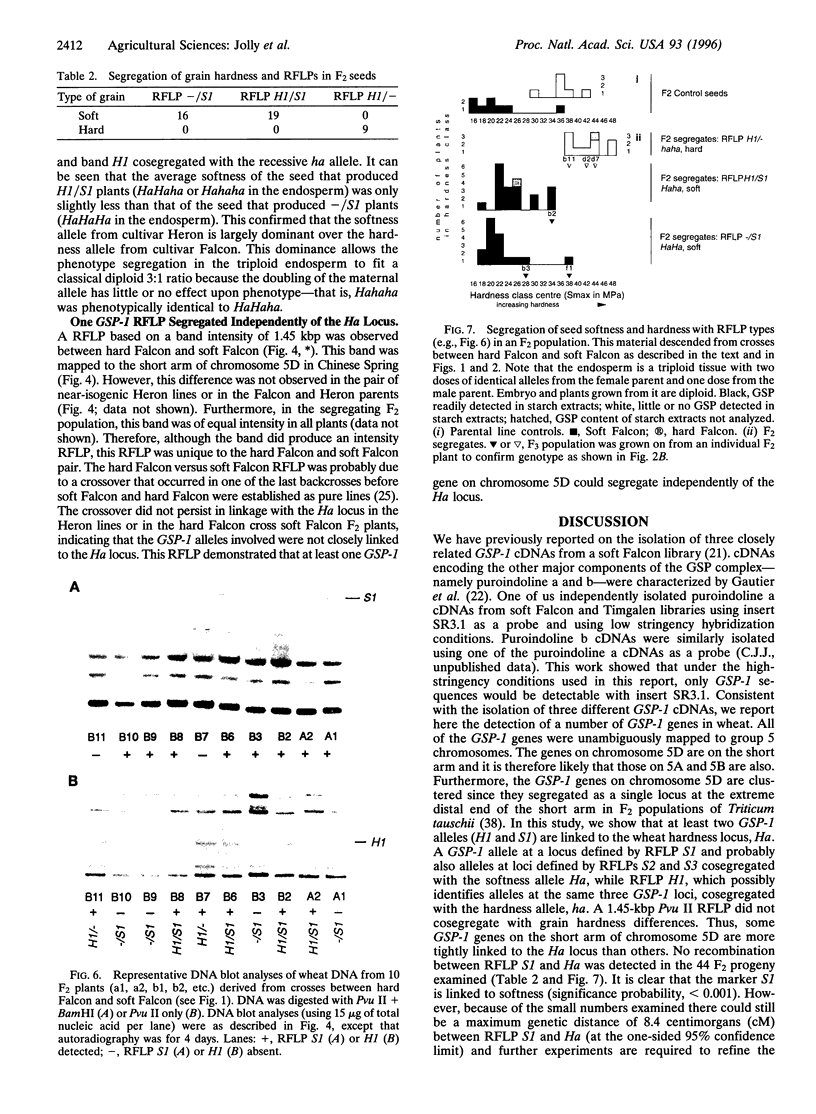
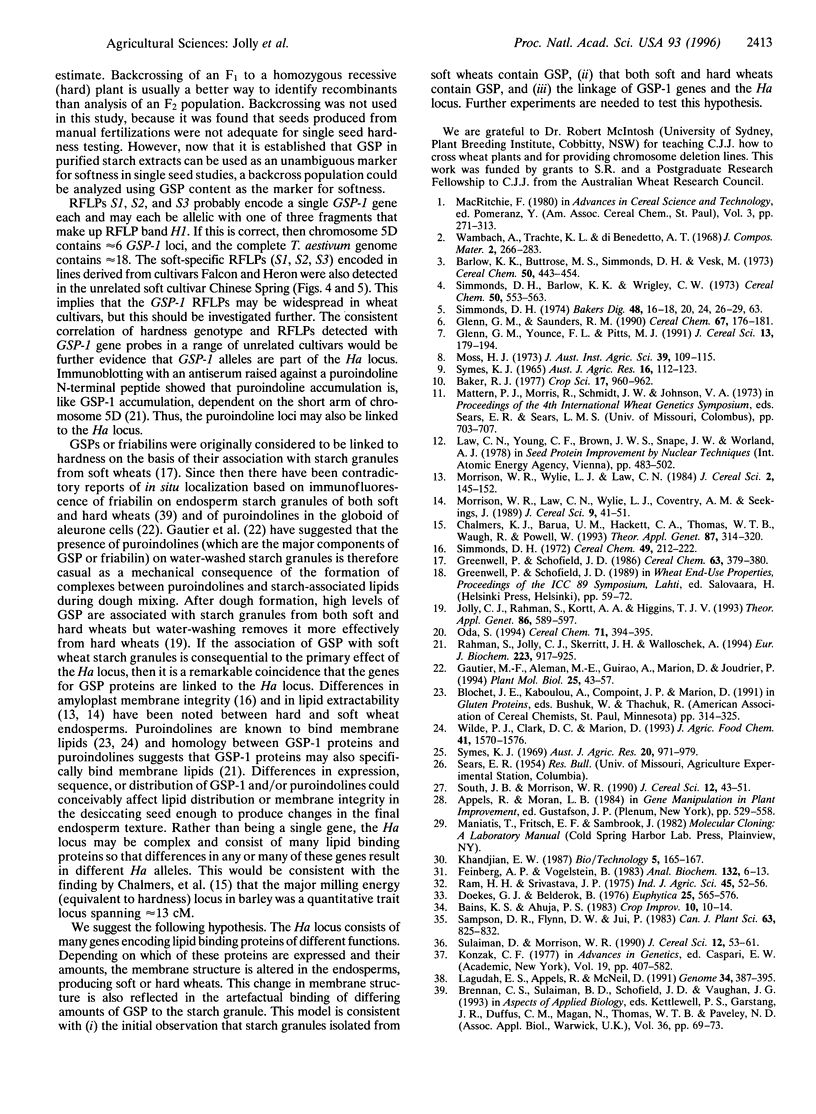
Images in this article
Selected References
These references are in PubMed. This may not be the complete list of references from this article.
- Feinberg A. P., Vogelstein B. A technique for radiolabeling DNA restriction endonuclease fragments to high specific activity. Anal Biochem. 1983 Jul 1;132(1):6–13. doi: 10.1016/0003-2697(83)90418-9. [DOI] [PubMed] [Google Scholar]
- Forsyth J. S., Ogston S. A., Clark A., Florey C. D., Howie P. W. Relation between early introduction of solid food to infants and their weight and illnesses during the first two years of life. BMJ. 1993 Jun 12;306(6892):1572–1576. doi: 10.1136/bmj.306.6892.1572. [DOI] [PMC free article] [PubMed] [Google Scholar]
- Gautier M. F., Aleman M. E., Guirao A., Marion D., Joudrier P. Triticum aestivum puroindolines, two basic cystine-rich seed proteins: cDNA sequence analysis and developmental gene expression. Plant Mol Biol. 1994 Apr;25(1):43–57. doi: 10.1007/BF00024197. [DOI] [PubMed] [Google Scholar]
- Konzak C. F. Genetic control of the content, amino acid composition, and processing properties of proteins in wheat. Adv Genet. 1977;19:407–582. [PubMed] [Google Scholar]
- Rahman S., Jolly C. J., Skerritt J. H., Wallosheck A. Cloning of a wheat 15-kDa grain softness protein (GSP). GSP is a mixture of puroindoline-like polypeptides. Eur J Biochem. 1994 Aug 1;223(3):917–925. doi: 10.1111/j.1432-1033.1994.tb19069.x. [DOI] [PubMed] [Google Scholar]



